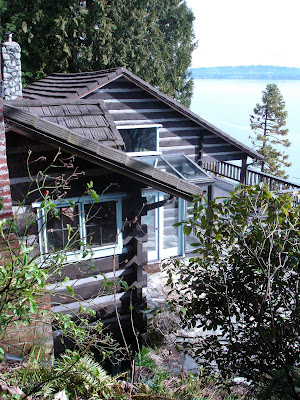
Which smells yellower to you, lemons or urine?
Sulfur or bananas?
Turmeric or rubber duckies?
It’s yellow time, here at the farm, daffodils and forsythia crown the front of the house. But both are so strangely odorless. The daffs do have a scent, a hidden flat rather musky scent, an unusual counterpoint to their youthful bright faces. The yellow polleny powder puffs of the male willows along the road are fragrant-less, too. I used to love the gray pelted pre-catkins of willows, the pussies, but now it is this polleny explosion I adore. The trees look dusted with sulfur, but are scentless too. It's as if yellow is enough. Or too much, after producing such a solar color the flowers have exhausted their resources with nothing left to spend on fragrance.
Of course there is the witch hazel, now finished, the earliest yellow, the first fragrance of spring out on the farm, even if it blooms in winter. Maybe the clean and wakeful fragrance is made possible by thrifty use of petals,those skinny strips of yellow hardly need any energy at all, accept to be rolled up each night as the temperatures drop. We also have the early blooming winter jasmine (Jasminum nudiflorum) with it’s perfect little “artificial” flowers, a yellow that Crayola would aspire to, but shamefully scentless not worthy of the name Jasmine.
Now I prefer lemony over urine-y. Actually I prefer lemony over chocolatey. Lemon meringue pie over chocolate cake. Lemon Heads over Tootsie Rolls. Lemonade, in winter, over hot chocolate. Brightness over darkness. Though I’ve never paired lemon and chocolate ( has anyone? ) I love the blend of bright and dark, if not in flavors at least in fragrance.
One spring flower that delivers both yellow and fragrance, bright and dark, lemon and urine, and musk, is the northwest native skunk cabbage ( Lysichiton americanus), or swamp lantern, a name I prefer for this glowing yellow calla lily relative. I find them neither skunky nor cabbagey. As the the back of our property slowly sinks back into the swamp you can find this gorgeous early bloomer cracking it’s way out of the saturated muck and matt of dead grasses. It’s reptilian, and no matter how many springs I’ve spent in the Northwest it still seems surprisingly exotic to me.
These large “flowers” are actually a 2 part inflorescence common to the arum family (Araceae) which includes Jack-in-the-pulpit, calla lilies, and many tropical house plants like philodendron and peace lily. The flowers, female and male appear like small petal-less nubs on the club-like spadix which is hooded by the leaf-like spathe. The spathe of our swamp lantern is very yellow and waxy and seems to act as a protective shield for the flowers against spring rains, it may also act as a “catcher’s mitt” keeping the flies and beetles it attracts with it’s less than floral scent trapped until they get their job done. But for humans it is the yellow beyond yellow, especially in the dead zones of swamps this time of year, that attracts. Northwest botanist Arthur Kruckeberg recommends keeping a distance, though he finds the odor not the least bit offensive. I, on the other hand, almost ritualistically bow down to the swamp lantern. Stick my nose in where no nose often goes and get a big whiff of the yellowest odor I know.
I know the sweet plum blossoms made legendary by chinese poets, and the penetrating honey of daphne so coveted by gardeners here, are what we like to think of as " The Fragrance of Spring". But to me there is nothing yellower than the lemony sharpness, forbidden urine, eggy sulfur,banana-happiness, bitter turmeric and rubber-ducky-clean scent of swamp lanterns, as complex as life itself, telling me spring is here.

Take a whiff.





